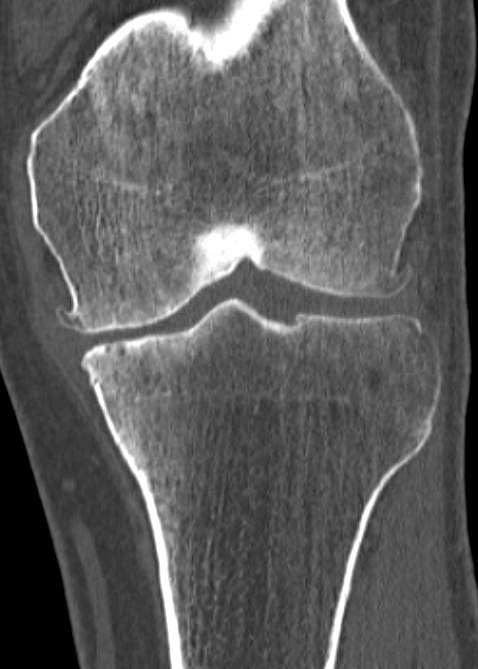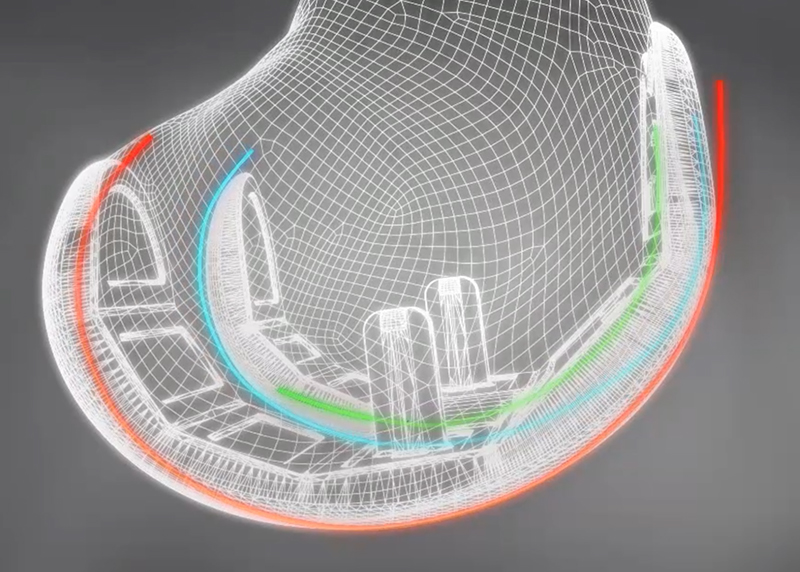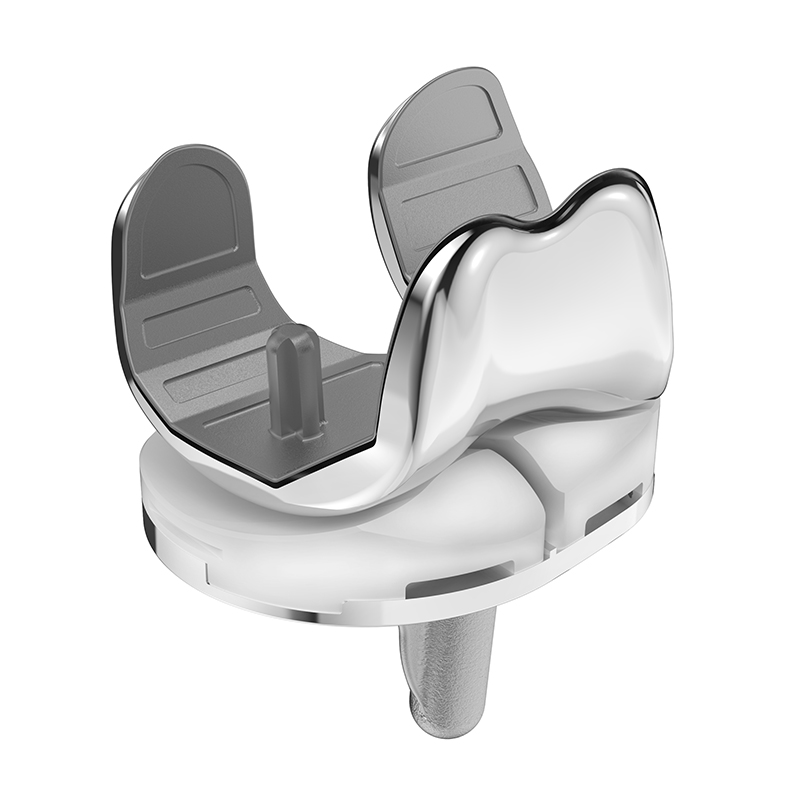A giant leap forward for prosthetic knees
FEATURE - 2ND JUNE 2021
Mr Ian McDermott, consultant orthopaedic surgeon at 25 Harley Street and Weymouth Street Hospital, on why custom-made prostheses offer a new gold standard for knee replacements
As of January 2021, there were over 500,000 patients in the UK on waiting lists, waiting for orthopaedic surgical procedures, with over 67,000 having already waited for more than a year for their surgery. It will take a very long time indeed for us to catch up with the frightening backlog of patients, and yet research has shown that once a patient reaches the point where knee replacement surgery is appropriate, then the longer they wait, the lower the probability will be of them achieving a good outcome.
What is ‘success’?
For years, the main indicator of outcome for joint replacement surgery was taken to be ‘prosthetic survivorship’ – how long a hip or knee replacement prosthesis might last before it potentially wears out and fails and needs to be revised. Our national joint registries have, however, now confirmed very clearly that about 95% of knee replacements are still working after 10 years (with only 5% having needed to be revised), and about 80% are still working after 20 years. So, knee replacements don’t just last 10 years, as many people seem to think. Also, importantly, the registries show that the differences in survivorship between the different brands and models of knee replacement prosthesis are minimal.
So, most of us have moved on now from the concept of prosthetic survivorship equating to success – there’s no point in a patient having a joint replacement that lasts many, many years, if that joint feels terrible, and if they’re therefore left unhappy for the rest of their life! Instead, the real mark of ‘success’ for joint replacement is patient satisfaction.

A CT scan of a knee: the first step in the creation of a custom-made prosthesis
There is enormous variation in the size, shape and contours of each person’s knee, hence the ‘kinematics’ of the joint (the way the knee moves). Standard knee replacement prostheses come in discrete sizes: size A, B, C, and so on. If a patient happens to sit in the middle of one of these size ranges, then great; however, if they lie somewhere in between, they’re going to end up with a knee prosthesis that’s either a bit too big or a bit too small. It only takes as little as 3mm of overhang to cause the prosthesis to rub against the adjacent soft tissues, causing ongoing pain.
On top of this, a standard knee replacement prosthesis is designed to one single shape, based on the concept of the ‘average’ knee. However, the shape and contours of people’s knees can vary enormously. Again, if the shape of your knee just happens to be close to the design of the prosthesis, you’re in luck, but in the real world not many people are actually ‘average’!

A 3D design of a knee prosthesis
What’s the solution?
Just like suits, if you want a knee prosthesis that is guaranteed to match your knee perfectly, with millimetre precision, you need one that has been designed and made specifically for you. These custom-made knees are now available, produced by an American company called Conformis.
For a custom-made knee, we take a CT scan of the patient’s knee, then send the data to Conformis in Boston. It then takes about five or six weeks for a prosthesis to be designed, manufactured and delivered back to us, ready for surgical implantation. The prosthesis comes with 3D-printed custom-made cutting blocks, which ensure that the implant is inserted with an accuracy of placement significantly superior to traditional jig-based knee replacement systems.

A custom-made prosthesis, designed and manufactured to match the individual patient’s knee
The new gold standard
With a standard off-the-shelf knee, about 80-85% of patients end up happy with their knee. That sounds pretty good, until one considers that in normal times, there are about 100,000 knee replacement procedures performed in the UK per year. That equates to 15-20,000 unhappy patients every year. This is why knee replacement surgery has a slightly poor reputation with some people. With a custom-made knee, however, the patient satisfaction rates are 90-95%. This shouldn’t be thought of as a 10-20% improvement in satisfaction rates: instead, it should be viewed as a two-thirds reduction in the risk of the patient ending up unhappy – and that’s massive!
There is currently a fad for some surgeons using robotics for implanting knee replacements, with claims that this increases the accuracy of placement. However, there is no evidence that this makes any difference to clinical outcomes, and with the custom-made, patient-specific cutting blocks provided with each Conformis knee, the accuracy is so good that robots are simply not needed. Furthermore, what is the point in using a £1 million robot to accurately implant a bog-standard off-the-shelf knee that probably won’t actually match your patient’s anatomy?
I’ve been using Conformis knees since 2012 now, and I was the first surgeon in the UK to implant one. I’ve implanted over 300 and am now part of the Conformis surgical visitation programme, where surgeons from the UK and from abroad join me in theatre to see first-hand how a custom-made knee is implanted and learn the techniques involved. Sadly, we can never completely guarantee a perfect outcome for every single patient, as that’s simply impossible. However, custom-made knees represent the biggest and best leap forward in knee replacement technology that we’ve seen in the last 30 years or so, and we are now seeing patient outcomes way above anything that we might previously have thought possible.
Mr Ian McDermott is a consultant orthopaedic surgeon specialising purely in knees, based at 25 Harley Street and Weymouth Street Hospital.
-
NEWS
New oral and maxillofacial centre of excellence arrives in the HSMA
The Centre for Oral and Maxillofacial Surgery is opening within the relaunched Harley Street Specialist Hospital
-
FEATURE
Prognosis: Issue 8
Prognosis Issue 8: The latest issue of the Harley Street Medical Area periodical
-
FEATURE
How to survive a marathon without getting injured
Dr Jo Larkin, consultant in sport and exercise medicine at Fortius Clinic and a former marathon runner, offers her tips for an injury-free endurance event
-
FEATURE
Endometriosis: what to look out for and how to get help
Mr Alfred Cutner, who heads up the Endometriosis Centre at King Edward VII’s Hospital, explains how and when to seek treatment for this painful and often debilitating gynaecological condition